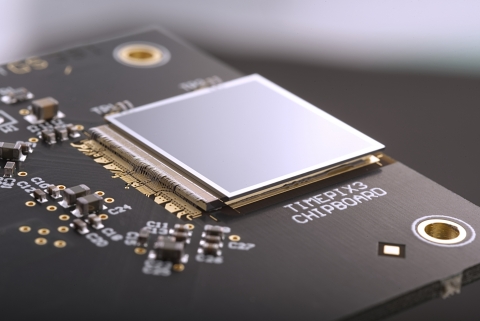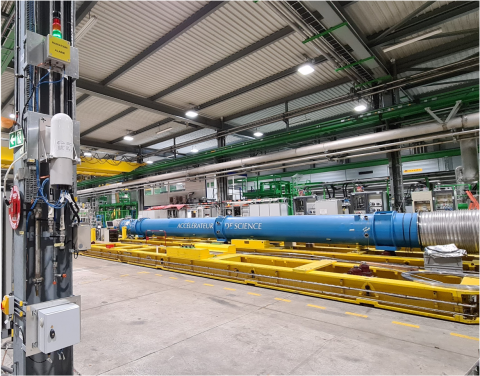ESE
HEP responds to the global chips crisis
Over the past year, semiconductor prices have been surging in Europe as demand increases globally. While this is happening with most products, it's been a larger problem given the role of semiconductors in most electronics, such as consumer…
Read moreMedipix3 reaches the clinic
In early October, the CERN Medipix Team (EP-ESE-ME) visited the newly installed Medipix3-based spectroscopic CT scanner at the Lausanne University Hospital CHUV, Lausanne. The 3D colour X-ray scanner has been developed in New Zealand by MARS…
Read moreSystem-on-Chip in Particle Physics Experiments
Many experiments in particle physics use custom-built electronics boards in order to perform event triggering and data readout. For many years now, those electronics boards have been using Field-Programmable Gate Arrays (FPGAs) for processing data.…
Read moreA safety and reliability perspective of the CERN RadiatiOn Monitoring Electronics (CROME).
CERN has the legal obligation to protect the public and the people working on its premises from any unjustified exposure to ionising radiation. In this context, radiation monitoring is one of the main tasks of the Radiation Protection Group.…
Read moreFastIC and FastICpix developments
Precise time tagging is a hot topic in High Energy Physics and in other fields. A number of detector technologies are available but there are few multi-channel front-end ASICs capable of providing time tagging in the region of 10ps. This article…
Read moreCHIPS: A new EP-ESE service for the HEP community
ASIC technology and designs are becoming increasingly complex but bring potentially huge benefits to HEP experiments (see also previous EP article "A bright future for microelectronics"). Figure 1 summarises the evolution of CMOS technologies in the…
Read moreSilicon photonics for high-energy physics experiments
Optical links have become ubiquitous in High Energy Physics (HEP) experiments to transport data generated from the particle detectors and other control points along the accelerator to the processing electronics. So far, links based on both single-…
Read moreColour X-rays for Medicine: The 2019 specXray workshop
The fifth workshop on Medical Applications of Spectroscopic X-ray Detectors (specXray) took place at CERN from 13 to 17th of May. Since its establishment in 2011, the workshop has brought together specialists from different but related…
Read moreElectronics experts come together at Antwerp
The “Topical Workshop on Electronics for Particle Physics” is the successor of the LEB and LECC Workshop series, which were initiated in 1994 by the LHC Electronics Board (LEB), an advisory board to the CERN LHC Experiments Committee. Since…
Read moreDeveloping new electronics for the CMS tracking system
The High Luminosity Large Hadron Collider (HL-LHC) entails a substantial upgrade of the CMS tracking system, to cope with much more demanding requirements and to implement additional functionalities. One of the main challenges for the experiments is…
Read more




